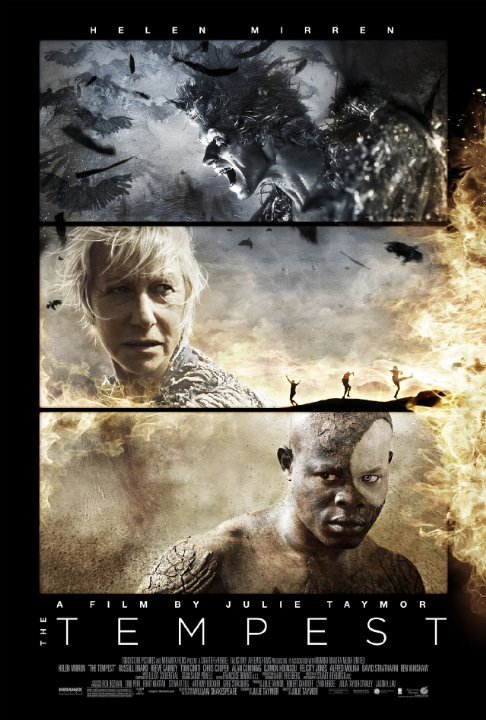
The Tempest is a 2010 film adaption of William Shakespeare's The Tempest, directed by Julie Taymor (of Titus and The Lion King fame) and featuring an All-Star Cast including Helen Mirren, Russell Brand, Chris Cooper, Alan Cumming, Djimon Hounsou, Felicity Jones, Alfred Molina, David Strathairn, and Ben Whishaw.
It is mostly faithful to the original play, but makes a few changes; the most notable is Prospero being changed to Prospera.
Tropes particular to the film include:
- Adaptational Heroism: Caliban is less the monster he was in the original play, more someone oppressed by colonial overlords and hungry for freedom and some retribution. At the end, he is left to his island as he wished and departs in a rather somber scene after exchanging significant looks with Prospera.
- Burn the Witch!: Antonio spread rumours that Prospera used Black Magic to kill her husband despite "knowing that others of my sex have burned for far less".
- Creepy Crows: When Ariel takes the form of a harpy to speak to the "three men of sin", he has great black crow wings and is surrounded by an illusionary swarm of crows that drives them to madness.
- Gender Flip: According to Julie Taymor, she chose to make Prospero a woman because no male actors excited her and she had recently encountered Helen Mirren at a party,
 prompting to cast her in the role.
prompting to cast her in the role. - Real Life Writes the Plot: The line, "Come unto these yellow sands" was changed to "Come unto these darkened sands" to fit with volcanic sand beaches used for the filming.
- The Magic Goes Away: Prospera frees Ariel, hurls her books into the sea and flings away her staff to shatter, renouncing magic entirely.
- Token Minority: Caliban is played by Djimon Hounsou, the only visible minority actor in the cast. This is somewhat suitable for a character that can be interpreted as a metaphor for a black slave and/or natives of the Caribbean islands that were conquered by Europeans during the Age of Exploration.
